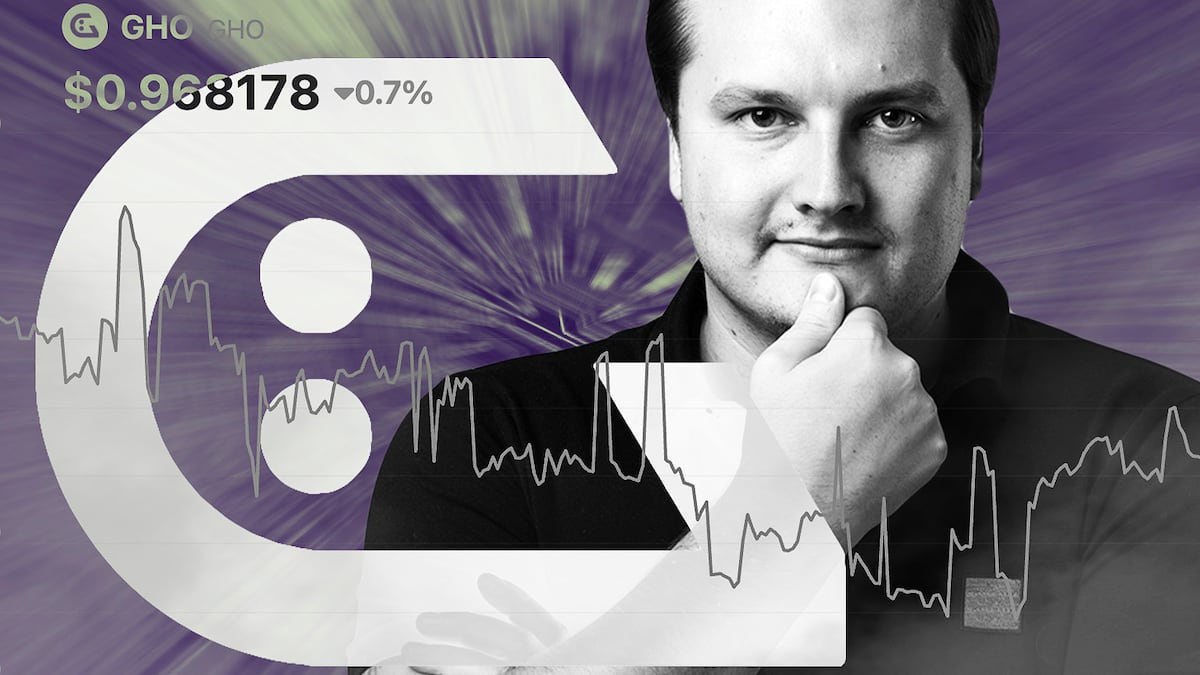- GHO has traded below its dollar peg since its 2023 launch.
- So far, no attempts to fix it have worked.
- Now, a new proposal offers a potential solution.
- If passed, people will be able to use Aave to redeem GHO for other stablecoins on a one-to-one basis.
Aave’s stablecoin, GHO, could soon get some help keeping its peg to the US dollar.
The digital cooperative that governs Aave, a lending protocol with almost $11 billion in user deposits, is considering a proposal that would let people use Aave to redeem the protocol’s troubled stablecoin GHO for other stablecoins on a one-to-one basis, without regard for GHO’s price on secondary markets.
Although it is intended to be pegged to the value of the US dollar, GHO has traded below its peg since launch in July 2023. One GHO was worth $0.98 early Thursday.
Enabling one-to-one redemption for other dollar-pegged stablecoins is expected to help GHO maintain its own peg to the dollar — but only after it reaches that peg, according to analysts with expertise in decentralised finance, such as longtime Aave contributor Marc Zeller and stablecoin ratings firm Bluechip.
Nevertheless, approving the proposal could be a critical step toward boosting market confidence in GHO.
Stablecoins are often considered one of the most successful applications of crypto to date, with real-world use in some developing economies and interest from big tech incumbents such as PayPal.
If GHO could grow to challenge market leaders such as Tether’s USDT and Circle’s USDC, it could provide a massive revenue boost for Aave DAO, the digital cooperative that governs Aave. DAO stands for decentralised autonomous organisation.
“GHO is already bringing 2.1M in annualised revenue @ tiny 35M mint cap,” Aave founder Stani Kulechov wrote in December on X, formerly known as Twitter. GHO supply is capped by Aave DAO at 35 million tokens.
“It’s a matter of time when GHO is ready for scale, and imagine the revenue for the Aave DAO.”
A shift in strategy
GHO’s launch strategy prioritised growth over tightly holding its dollar peg, Kulechov previously told DL News.
That focus shifted in recent months, as it became clear many people were minting GHO in order to short the token — to bet on its continued decline in value.
Attempts to bring GHO to peg have included increasing the cost to borrow GHO, liquidity incentives to boost demand, and enabling the use of GHO in Aave’s “safety module,” a vault of locked-away tokens that are distributed to users in the event the protocol suffers a shortfall.
GHO received a “D” from stablecoin rating firm Bluechip in December due to concern its value will continue to drop relative to the US dollar.
“Despite our rating, we believe GHO already has many key ingredients in place to become a safe, decentralised stablecoin,” Bluechip wrote, “provided that it implements stability-enhancing changes to its design.”
Recommended changes include the redemption mechanism currently under consideration by Aave DAO, known as the GHO Stability Module, or GSM.
The GHO Stability Module
Currently, Aave users can borrow GHO against crypto deposited in the protocol. The GHO is overcollateralised, meaning the value of crypto backing the GHO is worth far more than the GHO itself. This protects against potential fluctuations in the price of that crypto.
Various derivatives of Ether — like wrapped Ether or wrapped staked Ether — account for more than half of GHO’s current backing, according to data from TokenLogic. But 18% is backed by wrapped Bitcoin, the biggest cryptocurrency’s tokenised version on Ethereum, and another 8% is backed by versions of staked Ether like Rocket Pool’s rETH and Coinbase’s cbETH.
When a user repays their loan, the GHO is sent to Aave and destroyed. Interest on the loan is sent to Aave DAO.
But anyone who buys GHO on a secondary market cannot redeem the token for its collateral. The only way they can exit their position is by selling the token to someone else at market value.
The GSM would let users borrow GHO against USDT or USDC on a one-to-one basis. It would also allow anyone who holds GHO to use Aave to redeem the token for USDT or USDC.
Crypto risk analysis firm Gauntlet provided the Aave DAO with recommendations regarding the initial parameters of the GSM, such as a fee for swapping GHO for USDT and USDC.
Gauntlet recommended Aave DAO wait for GHO to reach peg before enabling the GSM. That’s because it fears the GSM’s reserve of other stablecoins would quickly be depleted as long as GHO is worth less than $1, with people buying GHO on secondary markets and swapping it for USDT or USDC on Aave to profit off the spread.
Bluechip agrees with that recommendation.
“The GSM will first have to go through a bootstrapping/minting phase to accumulate other stablecoins BEFORE it can be used for redemptions to stabilise the peg,” it wrote.
So far, however, the Aave DAO has a different opinion.
Through two days of voting, three-fourths of votes cast have been in favour of immediate implementation of the GSM. The other quarter of votes cast have been for approval of a framework for the GSM, with activation to come after it has reached peg.
Various attempts at getting GHO to peg have been a failure, Kene, a representative of Aave delegate StableLabs, told DL News. StableLab voted for the immediate deployment of the GSM.
“The time has come to explore using the GHO Stability Module to capture GHO’s peg and maintain it,” he said. “It is our opinion that we should not delay what could be [a] valuable step to getting GHO to peg.”
The voting period ends January 12 at noon ET.
Aleks Gilbert is DL News’ New York DeFi correspondent. Have a tip? Contact him at aleks@dlnews.com.
